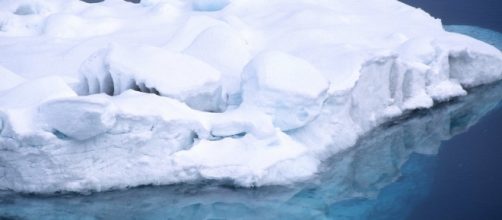Vincente Fuentes claims he has discovered more than one pyramid beneath the ice sheets of Antarctica. How did he find them? He used Google Earth.
Apparently, there have been rumors for years about pyramids on Antarctica. According to some researchers, there is evidence to support the theory of an ancient civilization inhabiting the continent. However, as of yet, no one has stepped up with the proof. Does the government not want us to know?
Interestingly enough, the Piri Reis medieval map shows Antarctica without ice. The map is written on gazelle skin and was drawn in the year 1513.
Either Reis had an active imagination or the continent he saw did not have ice. I will leave the rest to your imagination, or to the Mandela Effect.
The truth
Until the vast ice sheets of Antarctica melt enough for all to see the structures beneath, the truth will never be known, but sheer speculation can be fun for all.
According to a team of American and European scientists (who are unnamed), three pyramids have been discovered covered by ice, with one in the process of thawing. This leaves a rather unusual looking mountain with three distinct sides.
Little is known about the pyramids because the scientists aren't talking and the only reliable information on the web comes from a group of scientists who were planning an expedition to the icy mainland.
Researchers have discovered pollen and 32 species of bacteria within the icy mantle. If humans were there, then the building of the pyramids make sense. Of course, the how and why of building pyramids is always a question, though many believe they are homes for the dead, celestial pointers, alien constructions or secret military bases.
We do know that 40 million years ago Antarctica was almost toasty and certainly supported life. Temperatures ranged between 30-51 degrees Fahrenheit and the continent had a diverse vegetation as pollen counts show, and reptilian life suspected as well.
How we know
Scientists collect tubes, called cores, of drilled out sediment and put it under a microscope.
They check for moss, microbes, pollen, marine organisms and bacteria and apparently, they found plenty of evidence of life. Researchers have deduced from the mud what early Antarctica might have looked like. Some say it may have supported palm trees, which leads one to wonder exactly where Antarctica was located when the poles shifted.
Other fascinating discoveries are a meteorite from Mars that may contain fossilized life. Evidence of dinosaurs that are over 200 million years old and some that are as young as 75-80 million years old. Icebergs that calve off from the continent contain thousands of microbes so that when the icebergs melt they literally feed sea life.
Clearly, Antarctica is not an icy inhospitable continent where no one and nothing treads. In fact, it is teeming with life and with a history that is slowly making itself known throughout the world.
Which leaves one to wonder, could Atlantis yet be found?


